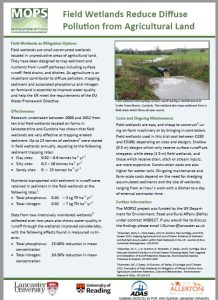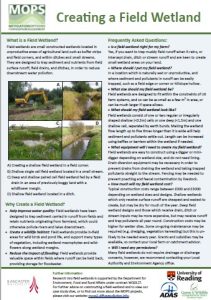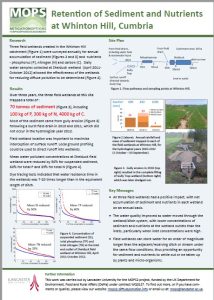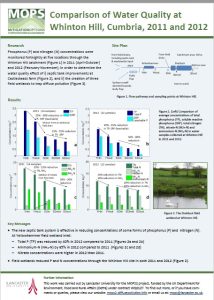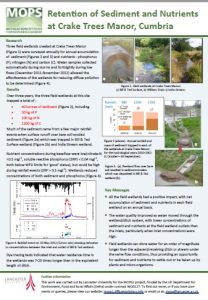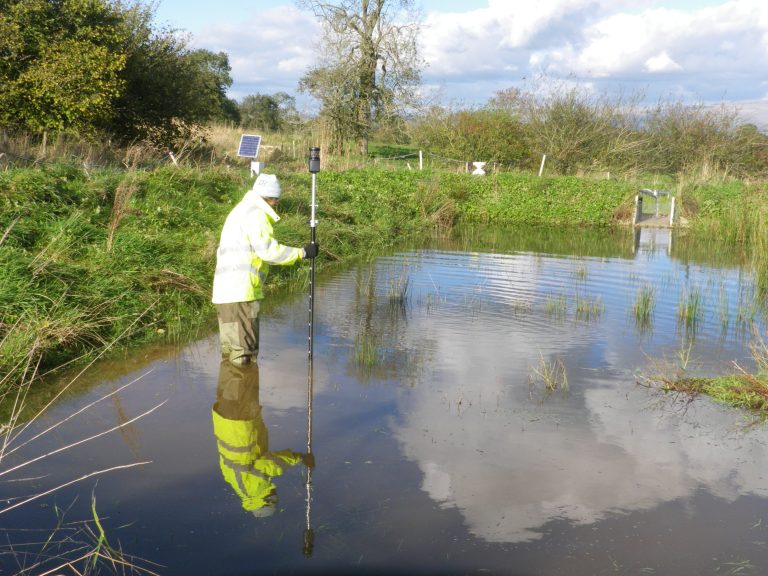
Mitigation options for Sediment and Phosphorus
Contact:
JOHN QUINTON

The Mitigation Options for Phosphorus and Sediment (MOPS) projects were two collaborative research projects involving Lancaster, ADAS, Reading University and the Allerton Research Trust, funded by Defra, to determine the effectiveness of a number of management options which have potential to mitigate sediment, phosphorus and nitrogen losses from agricultural land (diffuse pollution).
MOPS 1 focused on a variety of in-field and edge-of-field options, suitable for different farm and soil types. MOPS1 (2005-2008), trialled different tillage options for in-field surface runoff losses from winter-sown cereals (Deasy et al., 2009).
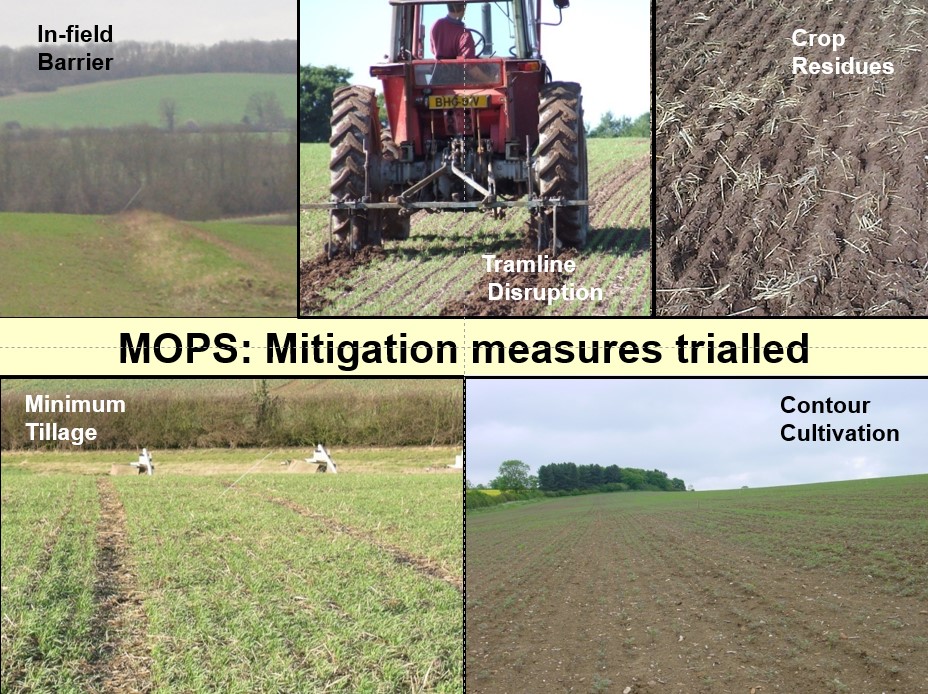
Five main treatments were trialled over three years:
- Minimum tillage
- Contour cultivation
- Crop residue management
- Tramline disruption
- In-field barriers
Work was carried out on replicated hillslope plots which were monitored for runoff, sediment and nutrient losses. These were located at:
- Hattons in Staffordshire (sandy loam textured soil)
- Rosemaund in Herefordshire (silty clay loam textrured soil)
- Loddington in Leicestershire (clay textured soil).
In-field measures effectiveness
Tramline management options appear to have the most potential for reducing diffuse sediment and P losses from agriculture; sediment and P losses were much greater from areas containing tramlines, than from monitored areas without tramlines, for all soil types (silt: up to 300x greater; sand: 20-40x greater; clay: 2-5x greater).
A tramline management treatment which broke up the compaction in tramlines using a simple tine proved to be effective in four out of five site-years, significantly (p<0.01) reducing losses of sediment and P by 75-99%, and reducing losses to levels similar to background losses from areas without tramlines. This tramline management treatment required an extra operation, and so was associated with a small cost of £2-5 ha-1.
Minimum tillage, which generates cost savings at the farm scale of £44-50 ha-1 was effective in three out of five site-years trialled, significantly (p<0.05) reducing sediment and P losses by 29-98%.
Incorporation of crop residues also reduced sediment and P losses but reductions were not significant.
Contour cultivation, and in-field contour vegetative barriers may also be effective mitigation options, but their success depends on accuracy of implementation and farmer attitude.
For more detail read our scientific paper
MOPS 2 Effectiveness of field wetlands
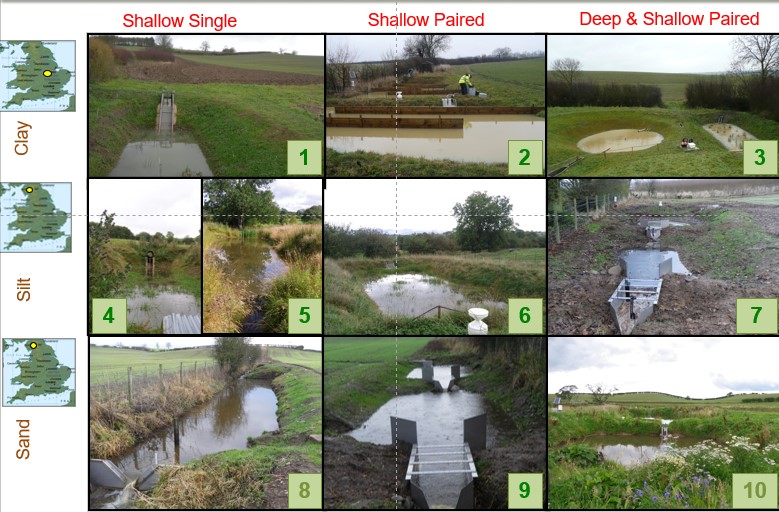
The edge of field work involved the creation of 10 constructed wetlands for diffuse pollution control (seven in the Eden catchment and three in Leicestershire in collaboration with the Allerton Project), with surface water, sediment and water quality monitoring to determine their effectiveness as pollution traps.
The MOPS 2 research has shown that field wetlands are very effective at trapping eroded sediment and nutrients: 70 tonnes of sediment was trapped at the three wetlands at one of the Eden site (Whinton Hill) over 3 years (mean average trapping rate 0.8 t ha-1 yr-1). Less sediment was trapped at the second Eden site (Crake Trees) (silty soil) with a total of 40 tonnes trapped over 3 years (average 0.3 t ha-1 yr-1); least sediment was trapped at the Leicestershire site (Loddington), with approximately 2 tonnes trapped over 3 years (0.04 t ha-1 yr-1).
The mass of phosphorus trapped was also significant: most was trapped at Whinton Hill (approximately 10 – 70 kg yr-1), followed by Crake Trees Manor (2 – 15 kg yr-1), and Loddington (0.4 – 1.4 kg yr-1).
Overall the research has shown that field wetlands are a promising option for helping to reduce diffuse pollution from agriculture, and they offer a permanent backup when other, more desirable, but often more difficult, soil management options have not been possible.
